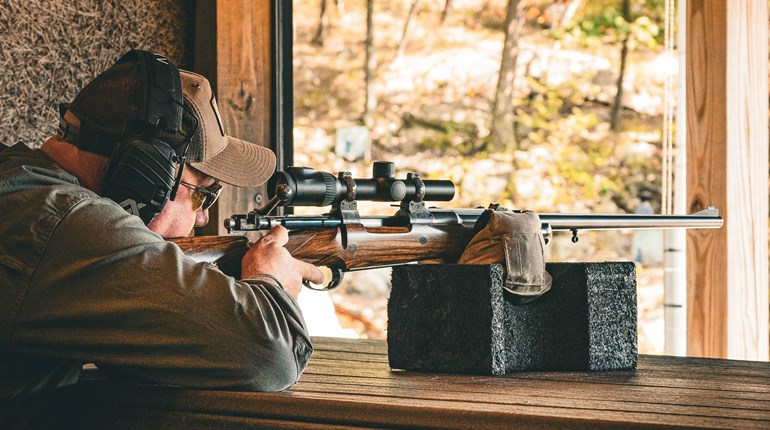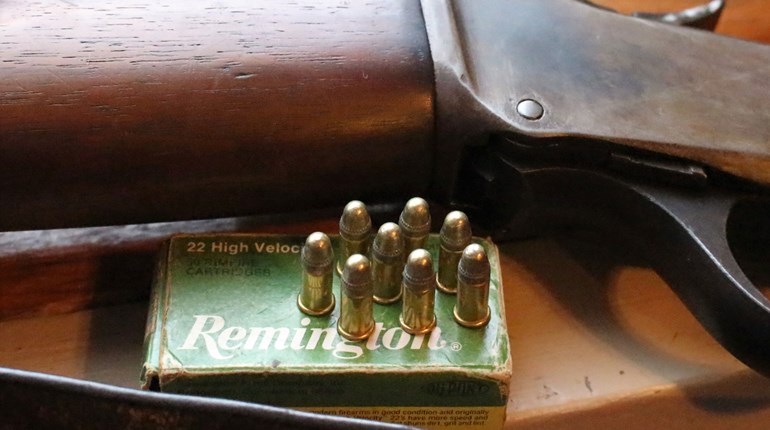
The late 1800s saw quite the flurry in the world of cartridge development, and I am often shocked by how many of those early designs remain with us as the 21st century is closing its first quarter. The .22 Long Rifle, .45-70 Government, .38 S&W Special, .30-30 Winchester and .45 Colt are all cartridges which were introduced in the last three decades of the 19th century and remain popular to this day. There have been improvements on these ideas: the .450 Marlin is an update of the hot .45-70 loads, and the .357 Magnum is an elongated and souped-up version of the .38 Special. The same idea was applied to the .32 S&W—in 1984s .32 H&R Magnum and then ultimately .327 Federal Magnum.

Where the .32 S&W was one of the classic “belly-gun” cartridges used for self-defense at intimate distances, the .327 Federal Magnum is a revved-up cartridge, giving ballistics which are quite respectable for the bore diameter. Oh, and that bore diameter? It is neither .32, nor .327; this entire family of cartridges uses a bullet measuring .312 inches, and how it had come to be called .32 or .327 is not easily discernible. To the best of my knowledge, the .32 S&W wasn't a heeled bullet—which the .38 S&W was—and it seems that it was just a rounded up number which stuck. Federal’s nomenclature for their handgun round doesn’t seem to have any root in a particular dimension of the cartridge.
The .327 Federal is a straight-walled rimmed cartridge, using a rim diameter of .375 inches, and a body diameter of .337 inches. The case measures 1.200 inches, and the cartridge overall length comes in at 1.47 inches. The .327 Federal Magnum uses the same projectiles as the .32 S&W, .32 S&W Long and .32 H&R Magnum, generally weighing between 85 and 100 grains, though Buffalo Bore offers a 130-grain hard cast bullet load, and Federal’s HammerDown line features a 127-grain bonded core hollowpoint. The latter two loads will be right at home in the lever-action rifles chambered for this cartridge, making the .327 Federal Magnum one of those sweet-shooting cartridges suitable for both handgun and rifle, and a suitable choice for a young hunter in pursuit of deer at woods ranges.

Like the .357 S&W Magnum, the .327 Federal Magnum is really two cartridges in one, and is actually more complex than that. There is the handgun side of things, where a revolver can be used for personal defense or for hunting lighter game at close range, and there is the rifle/carbine end of things, where the cartridge’s full potential is seen. In a handgun, you can expect velocities between 1100 and 1400 fps, yet the carbine/rifle will give velocities 500 to 700 fps faster. Somewhere along the line, one of my predecessors who made his living on a manual typewriter decided that you needed a minimum of 1,000 ft.-lbs. of energy to kill a deer. While I can’t attribute that quantification with any amount of certainty, it has been repeated enough to be taken as gospel, and I’m here to tell you that it is nonsense.
What you do need is a projectile—be it a 100-grain bullet from a .327 Federal, a wooden-shaft arrow, or a 12-gauge slug—to penetrate into the vital organs and create enough tissue damage to cause death via hemorrhage. From a Henry lever gun, you will see the .327 Federal generating anywhere between 650 and 1,000 ft-lbs of energy, and at woods distances—where shots rarely exceed 75 yards—you’ll have little problem killing a deer. Is it going to have the same dramatic effect that a .300 Magnum will? Probably not, but for a recoil-sensitive hunter, I’d much rather have a .327 placed in the vitals than a .300 in the guts. If you wanted to have a neat combination of sidearm and lever gun, you could do worse than choosing the .327 Federal Magnum.

Factory loads for the .327 Federal are predominately centered around the revolvers, with Hornady offering their 80-grain FTX bullet in the Critical Defense line, Speer offering a 100-grain Gold Dot load and Federal’s American Eagle line giving an affordable pair of options with their 85- and 100-grain jacketed softpoint loads. On the hunting end of things, Federal offers the 100-grain Swift A-Frame and the aforementioned 127-grain HammerDown load; and Buffalo Bore offers a 100-grain jacketed hollowpoint and the 130-grain hard cast Keith-style bullet.
There are plenty of revolvers to choose from, like the Ruger SP101, the Taurus 327 and the Smith & Wesson Model 632; on the rifle end of things there is the Henry Big Boy series, giving a selection of lever guns chambered for this cartridge.

Undoubtedly, one of the benefits of having a firearm chambered for the .327 Federal Magnum is that, not unlike the .357 Magnum and .44 Magnum, you can shoot other cartridges from the chamber. The .32 S&W, .32 S&W Long and .32 H&R Magnum can all be safely fired in a .327 Federal Magnum chamber, and that allows a new shooter to transition from mild to wild, all the while learning the art of marksmanship with the same firearm, and that can be vital to a new shooter. It is also a wonderfully refreshing experience for a seasoned shooter to spend the day plinking with a lever gun chambered for the .327 Federal Magnum, but shooting .32 S&W ammo.
Despite the magnum moniker, the .327 Federal Magnum is a pleasure to shoot, giving a whole bunch of flexibility. While it might not be the man-stopper that the .44 Magnum or .45 ACP is, it is a viable defensive cartridge, and in a long gun can be a great choice for the thick patches of woods where the shot distances are on the shorter end of the spectrum.
Looking for previous installments of our "Behind the Bullet" series? We've got you covered.
• .450 Bushmaster
• 7mm PRC
• .275 Rigby
• .340 Weatherby Magnum
• .416 Ruger
• 27 Nosler
• .257 Roberts
• 7mm Weatherby Magnum
• .300 PRC
• .350 Rigby Magnum
• .450 Nitro Express
• .17 Hornet
• 7mm STW
• 6.8 Western
• .375 Ruger
• .223 Remington
• 6.5x55 Swedish
• .416 Remington Magnum
• .300 Winchester Short Magnum
• 28 Nosler
• 6.5 PRC
• .22 WMR
• .458 Winchester Magnum
• .22 Hornet
• .280 Ackley Improved
• .240 Weatherby Magnum
• .458 Lott
• .264 Winchester Magnum
• .348 Winchester
• .33 Nosler
• .260 Remington
• .30-30 Winchester
• .416 Rigby
• .358 Norma Magnum
• .22 LR
• 7mm-08 Remington
• 8mm Remington Magnum
• .338 Federal
• .224 Valkyrie
• .338-06 A-Square
• 9.3x62mm Mauser
• .257 Weatherby Magnum
• .45-70 Government
• .300 H&H Magnum
• .25-06 Remington
• .30-06 Springfield
• 6.5 Creedmoor
• .300 Remington Ultra Magnum
• 7mm Remington Magnum
• .470 Nitro Express
• .280 Remington
• .300 Winchester Magnum
• .270 Winchester
• .222 Remington
• .45 ACP
• .404 Jeffery
• .44 Remington Magnum
• .41 Remington Magnum
• .243 Winchester
• .338 Winchester Magnum
• .357 S&W Magnum
• 6.5-284 Norma
• 8x57 Mauser
• .38 Smith & Wesson Special
• 7x57mm Mauser
• 9mm Luger
• .35 Whelen
• .454 Casull
• .375 H&H Magnum
• .45 Colt
• .22-250 Remington
• 10mm Auto
• .308 Winchester



































